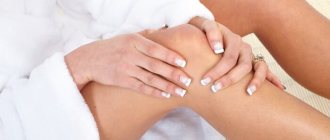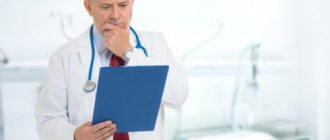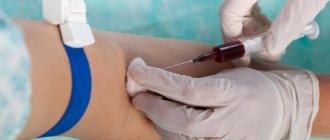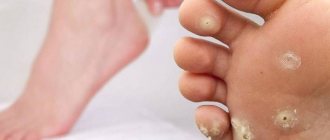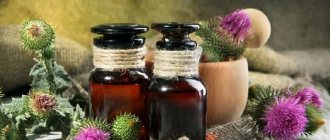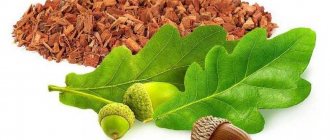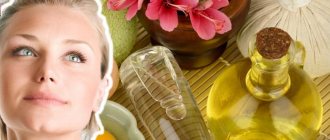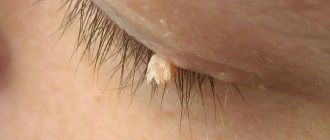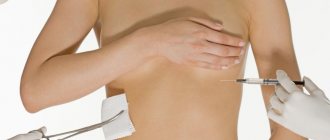There are cases when, against the background of high or normal blood pressure, the pulse decreases. In medicine, heart rate drops below 60 beats/min. called bradycardia. It causes a number of unpleasant symptoms. If this type of arrhythmia is not associated with the development of cardiac pathology, then you can raise your heart rate and improve your condition yourself with medications, folk remedies or physical exercise.
Causes of low heart rate
External factors contributing to the occurrence of short-term bradycardia that does not require medical intervention:
- Sports activities (swimming, football, running, rowing, strength training). A low heart rate (45-50 beats/min) occurs in professional athletes and children involved in several sections simultaneously. In this case, attacks usually occur at night and are not accompanied by other symptoms. In the human heart muscle, additional fibers are formed due to the constant work of the organ in an enhanced mode. Therefore, the body adapts to this rhythm of life, ensuring the necessary blood circulation at a low heart rate.
- Hypothermia (prolonged exposure to cold water). This term refers to the complex cooling of the body to a temperature of less than 35 degrees. Bradycardia occurs as a defensive reaction. The heart begins to contract less to conserve energy. This state resembles suspended animation.
- Unintentional pressure on the eyeballs or compression of the vagus nerve in the area of the carotid artery with a tie causes stimulation of the reflex zone of the heart. The pulse decreases by about 10 beats/min.
Pathological causes of decreased heart rate:
- Taking medications (cardiac glycosides, beta blockers, morphine, amisulpride, adenosine) in excessive dosages or in the presence of individual intolerance to the components included in their composition. Improper use of drugs provokes the development of side effects or poisoning requiring medical attention.
- Age-related and acquired cardiosclerosis, in which islands of connective tissue appear in the myocardium. This leads to a deterioration in cardiac contractility.
- Hypothyroidism. Lack of thyroid hormones, which are involved in most vital processes occurring in the body. The doctor will determine this cause of bradycardia by the presence of accompanying symptoms. The attacks will appear more and more often, and then become permanent.
- Infectious diseases (viral hepatitis, typhoid fever, sepsis). There comes a time when the body cannot fight the infection and the functioning of the heart is disrupted, as indicated by a drop in blood pressure and the gradual development of dysfunction of various organs and systems. Often the pathology ends in the death of the patient.
- Heart diseases (myocardial infarction, endocarditis, myocarditis, ischemia). In this case, the tissue of the conduction system is damaged, which leads to untimely contraction of cardiomyocytes and a slowdown in the pulse. The symptom is not constant for this type of pathology, so additional diagnostics are prescribed.
- Increased tone of the parasympathetic nervous system due to neuroses, intracerebral hemorrhage, peptic ulcer, tumor in the mediastinum, injuries to the head, neck and chest. Such conditions lead to infringement of the vagus nerve.
- Poisoning with chemical elements (pesticides, lead, drugs, nicotine). Bradycardia develops very quickly, and the heart rate depends on the amount of toxin entering the blood.
- In addition to heart disease, against the background of high blood pressure, the pulse decreases with atherosclerosis and VSD, especially in elderly patients.
Important! To avoid the development of unpleasant consequences, treatment of pathological bradycardia is carried out only in a hospital setting, therefore, with a prolonged decrease in heart rate, doctors recommend undergoing an examination.
Causes of low heart rate with normal blood pressure
Doctors name the following reasons for low heart rate with normal blood pressure:
- increased pressure inside the skull;
- intoxication of the body, including poisons and chemicals;
- heart rate drops when taking certain medications;
- Neurological diseases can reduce heartbeat;
- infectious lesion;
- heart rate pathologies can slow down the heart rate;
- bruises of the chest, neck;
- pain syndrome, consequences of swimming in cold water.
Symptoms and signs
A pronounced clinical picture appears when the pulse drops to 45 beats/min. In this case, a person experiences the following symptoms:
- severe weakness;
- impaired movement coordination;
- cold sweat;
- dizziness;
- squeezing pain in the chest area;
- a sharp jump in blood pressure;
- nausea;
- shortness of breath on exertion;
- pale skin;
- sleep disturbance;
- lack of air;
- fog;
- inability to see objects clearly;
- fainting.
People, being in a state of low heart rate, cannot clearly remember the information they hear and formulate their thoughts. In the absence of worsening symptoms, heart rate restoration is carried out at home.
Signs of Morgagni-Edams-Stokes syndrome:
- causeless anxiety;
- dilated pupils;
- redness of the face followed by pallor;
- swelling of the veins in the neck;
- fasciculation of facial muscles;
- limb spasms;
- loss of sensation in the legs;
- labored breathing;
- urinary and fecal incontinence;
- severe dizziness;
- fainting.
This condition can lead to death, therefore, if 2 symptoms appear at the same time, you need to quickly call an ambulance and provide first aid, otherwise the person faces death.
Causes
A low pulse can be a natural reaction to an irritant - excessive physical activity, cold, or have a pathological nature - develop as a symptom of a serious disease. The most common causes of bradycardia are:
poisoning and dehydration of the body;- drug abuse;
- neurological diseases;
- endocrine dysfunction;
- pathologies and diseases of the cardiovascular system;
- chest bruises;
- postoperative and post-infarction period.
And also read on our website: What does a high pulse mean with normal blood pressure, what to take, how to reduce and how to stop a rapid heartbeat?
Elderly people also often experience a low heart rate - this is due to the natural processes of aging. Their vessels lose elasticity and the ability to fully contract and, accordingly, weakly push blood to the heart.
People with a hypersensitive body may experience difficulties in the functioning of the heart when weather and climatic conditions change.
How to quickly increase your heart rate without raising your blood pressure
If your relative suffers from diseases of the cardiovascular system, then doctors advise you to learn ways to quickly increase heart rate that do not affect blood pressure readings:
- earlobe massage;
- coffee or strong tea with the addition of 2-3 drops of ginseng or a slice of lemon;
- 15-30 drops of Corvalol tincture;
- a few pieces of dark chocolate;
- mustard plasters placed for 3-5 minutes on the right area of the sternum;
- physical exercise;
- hot bath.
How to increase your heart rate at home quickly
To quickly increase your heart rate at home without medications or drinks, you can use the following reflex methods:
- clench your hands forcefully into fists 7-10 times;
- put the mustard plaster on your chest for 3 minutes;
- find a point at the base of the nail on the side of the ring finger and press on it with your nail, hold for 5 minutes;
- massage the base of your left thumb with your right hand for 2-3 minutes;
- raise your straight arms up and sharply, with an exhalation, lower them down 5-7 times;
- squat 5 times (you can hold on to the back of the chair).
Without increasing pressure at high pressure
You can speed up your pulse without increasing blood pressure at high levels using a hot foot bath. You can add a tablespoon of dry mustard to it. This method is also recommended for headaches. To stimulate the heart, contrast foot baths are also performed. It is recommended to place two containers next to each other - with hot and cold water, alternately immerse your feet in them, avoiding discomfort.
At normal pressure
The best way to increase your heart rate without medication at normal blood pressure is through physical activity. Any type is suitable - walking, light jogging, exercise, swimming. You can also drink coffee with cinnamon or tea with lemon, and eat chocolate.
How to increase heart rate in an elderly person
To increase the heart rate in an elderly person, acupressure of the base of the nail of the little finger on both hands, vigorous squeezing of the hands, and walks in the fresh air are used. It is useful to add garlic, ginger to food, grind dry kelp in a coffee grinder and use it instead of salt.
Regular intake of pollen and honey helps normalize the pulse. Every morning on an empty stomach you need to drink a mixture of the following composition: take a teaspoon of these components per 100 ml of warm water; at normal or low blood pressure, add ginseng tincture - 10-15 drops.
How to increase blood pressure and pulse
To immediately increase blood pressure and pulse, take herbal remedies with a tonic effect - extracts from Rhodiola rosea, Schisandra, and Eleutherococcus. They are alternated for 2-3 weeks or a mixture of different drugs is prepared. A single dose for hypotension with bradycardia is 20-25 drops. Reception is recommended in the morning before breakfast and half an hour before lunch.
You can enhance the benefits of adaptogens with freshly squeezed pomegranate, blackcurrant or grape juices.
First aid
If you notice signs of bradycardia, you first need to measure your pulse. If the heart rate is below 40 beats/min, but the person is conscious, you need to do the following:
- call an ambulance;
- help the patient take a horizontal position by placing a pillow under his head and legs;
- open the window to provide access to fresh air;
- Give a Nitroglycerin tablet if chest pain occurs.
If a person faints, then additionally you need:
- unbutton or remove clothing that is constricting the chest;
- splash cold water on your face;
- warm your hands and feet (wrap them up, apply a heating pad);
- bring ammonia to your nose;
- Perform artificial respiration and chest compressions if the pulse cannot be felt.
Important! Loss of consciousness indicates a decrease in heart rate to 25 beats/min. and below. In this case, there is a high risk of developing brain hypoxia, leading to death.
What to do at home?
If a person complains of feeling unwell (nausea, weakness, dizziness, coldness in the arms and legs, goosebumps and darkening in the eyes with a sharp rise), the first thing to do is determine the pulse rate and measure the pressure.
First aid
To quickly normalize your rhythm and improve your well-being, you need to do the following:
- drink hot coffee or green sweet tea, you can add cinnamon or cloves - spices help increase your heart rate;
- among medications, it is preferable to use preparations based on radiola and echinacea;
- take deep breaths for a minute;
- take a contrast shower if your health allows.
Hot coffee quickly increases your heart rate
It is important to remember that all of the methods listed are relevant if there is no predisposition to high blood pressure. Otherwise, there is a risk of significantly increasing your pulse and blood pressure, which can lead to complications.
Medicines and drugs
In case of bradycardia and high blood pressure, Corvalol and Zelenin drops will help stabilize the condition (you need to drink 15 drops at once). When taking this remedy, it is important to strictly follow the instructions.
If we are talking about a slow heart rate and low blood pressure, then you should take any medications with great caution. Cordiamine drops, which should be taken at the first symptoms of illness, will help raise your pulse.
Cordiamine drops are used to increase heart rate
Eufillin, Atenolol, Atropine are considered effective medications for low heart rate, but such drugs should not be taken without a doctor’s prescription, so as not to aggravate the patient’s condition.
What foods to eat when your heart rate is low
For bradycardia, a strict diet is not required, but it is worth reviewing the diet:
- Eat more vegetables, herbs, and fruits. Focus on carrots, parsley, onions, cabbage, citrus fruits, bananas, apples.
- Lean meat and steamed foods are welcome.
- Introduce fermented milk products and milk porridges into regular consumption.
- Drink more fluids. The daily dose should be at least 1.5-2 liters.
- Eat seafood more often.
Vegetables are good for the body
It is important to limit the consumption of spicy, salty, smoked, fatty and fried foods as much as possible. Floury and sweet dishes are also eaten as rarely as possible. Avoid drinking alcohol and smoking cigarettes.
Proper nutrition will help normalize the functioning of the heart muscle and improve the condition of the body as a whole.
Exercises when your heart rate is low
To raise your heart rate, which has dropped to 50–55 beats per minute, you can do a short jog. If such a procedure is not possible, there are several exercises to normalize the heart rate.
- To start, you need to raise your hands up, and after 3-5 seconds quickly lower them down.
- Lie on the floor and pretend to be “scissors” or “bicycle” with your feet. Similar movements must be done 15 times in both directions.
- In a lying position, bend your knees, clasping them with your arms at chest level. Close your hands tightly, trying to open them with your knees.
- Tilt the head to the sides (left and right). After such manipulation, it is recommended to sit quietly and work with your left hand (squeeze and unclench) for 1–2 minutes.
You can do simple exercises to raise your heart rate
Treatment with folk remedies
A decrease in heart rate does not always provoke people to see a doctor. To alleviate the condition at home, you can use folk remedies. Among them there are those that do not affect blood pressure.
Walnut medicinal mixture
Mix half a kilogram of chopped nuts with sesame oil (250 ml). Grind 4 lemons, pour 1 liter of hot water over them. Mix the prepared ingredients, add 20 g of powdered sugar. Take the resulting mixture in the morning, at lunch and in the evening, 1 tbsp. l., without exceeding the dose.
Walnuts will help increase your heart rate
Rose hip decoction
Boil rose hips (50 g) in 0.5 liters of water for at least 10 minutes. After cooling, pass the berries through a colander, place the resulting pulp in the broth, mix with honey (3 tsp). It is recommended to take this remedy 20 minutes before meals every day.
Rosehip will help normalize the pulse and reduce high blood pressure.
Rosehip is good for lowering high blood pressure
How to increase your heart rate at home without increasing your blood pressure
There are several ways to solve this problem at home. It should be borne in mind that if you have pathological bradycardia, you must first consult with your doctor about the possibility of using such techniques.
Medicines
Taking into account the patient’s diagnosis, the following drugs are prescribed:
- Caffeine sodium benzoate – 2 g daily;
- nootropics – Memotropil, Piracetam;
- bronchodilators - Izadrin, Eufillin;
- antiarrhythmic - Cardiodarone, Amiodarone;
- combination drugs - Zelenin drops, Corvalol.
The dosage and duration of taking medications is determined by the doctor after diagnosis.
Folk remedies
Alternative medicine offers recipes for increasing heart rate based on herbal products that do not cause an increase in blood pressure:
- Squeeze the juice out of 10 lemons and mix with the same amount of garlic pulp. Place the resulting mass in a 3-liter bottle and pour in 1 liter of honey. The product is infused for 10 days and taken 40 minutes before. before meals, 20 g for 3 months.
- Chopped walnuts (150 g) are mixed with grated zest of 1 lemon, a pinch of cinnamon, cloves and honey. Infuse the mixture for 1 day and take 1 tbsp 1 hour before lunch.
- Young pine branches (60 g) are poured with vodka (0.4 l) and left for 15 days in a cool place. Drink the tincture 1 hour before meals, 20-25 drops.
- 20 g of yarrow herb are poured into 0.4 liters of boiling water for 15 minutes. Drink a decoction 3-4 r. per day 1 tsp.
- You need to pour 0.5 liters of vodka with 15 g of dry crushed ginseng root. Infuse the product for 30 days, shaking the contents every 2 days. Drink 30-40 drops daily for 1.5 months, and then take a break for 30 days.
Before using folk remedies, it is recommended to conduct an allergy test to check for the presence of individual intolerance.
What foods to eat
For bradycardia, it is recommended to include the following products in your daily diet:
- dark dark chocolate – 15 g per day;
- cumin, cloves, cinnamon or nutmeg;
- fresh vegetables and fruits;
- greenery;
- dairy products;
- sea fish;
- vegetable oils;
- lean meat;
- cereals – buckwheat, rice, oatmeal;
- dried fruits.
Food is served boiled, stewed or steamed. Flour and sweets should be excluded from the menu.
What exercises to do
Exercising is an effective way to increase your heart rate. The following exercises are recommended:
- I.P. - standing. Raise your arms up and stay in this position for 2-3 seconds, and then sharply lower them.
- I.P. - lying down. Raise both legs up and perform circular movements.
- In the same I.P. bend your knees and clasp them with your hands. Separate your arms by bending your knees to the sides.
- Squeeze and unclench your left hand.
The number of repetitions of each exercise is 10-20 rubles.
How to raise your heart rate at home
You can raise your pulse at home with drinks and food, but this is only permissible for patients with neurosis and neurocirculatory dystonia. Ways to increase:
- drink coffee or strong tea with honey and lemon;
- eat 1-2 pieces of dark dark chocolate (cocoa percentage at least 70%);
- put a few grains of salt under your tongue and chew a slice of fresh ginger;
- Mix a teaspoon of honey with cinnamon on the tip of a knife and wash it down with a glass of water with lemon.
Traditional methods for increasing heart rate
Folk remedies help speed up the heart rate when used regularly. The most effective recipes are listed in the table.
| Plant | What to add | Cooking method | How to use | A course of treatment |
| Nettle 20 g | Glass of vodka | Leave for 2 weeks in a dark place | 15 drops with water 2 times a day | 2 weeks |
| Pine shoots 30 g | 100 g 70% alcohol | Leave for 10 days | 10 drops 3 times a day half an hour before meals | 30 days |
| Tatarnik tablespoon | Glass of boiling water | Keep in a water bath for 15 minutes | A third of a glass 3 times a day before meals | 1.5 months |
| Yarrow dessert spoon | Glass of boiling water | Leave for 30 minutes | Drink half a glass before breakfast and lunch | 15 days |
If it is 50 with bradycardia with arrhythmia, hypotension
A low pulse (about 50 beats) with bradyarrhythmia in a patient with neurocirculatory dystonia of the hypotonic type helps speed up the collection of herbs:
- violet herb - 2 tablespoons;
- calendula flowers - 1 tablespoon;
- sedum leaves - 1 tablespoon;
- rose hips - 2 tablespoons;
- nettle leaves - 2 tablespoons.
To prepare the infusion, take a tablespoon of a mixture of dry crushed plants and 300 ml of boiling water, leave for 30 minutes and take a third of a glass half an hour before meals for 30 days. In the morning at low blood pressure, add 15 drops of ginseng tincture.
For bradycardia
Bradycardia is a symptom of low thyroid function (hypothyroidism); it is accompanied by constant chilliness, drowsiness, and swelling. Patients are prescribed analogues of the hormone thyroxine (L-thyroxine, Euthyrox), and it is also recommended to ensure sufficient iodine intake from food:
- seaweed, nori seaweed;
- seafood - mussels, squid, shrimp;
- sea fish;
- persimmons, apples with seeds.
Regular salt is replaced with iodized salt. This diet also helps with atherosclerosis.
Prevention
To avoid the development of a dangerous condition when the pulse drops to a critical level, doctors advise doing the following:
- do not exceed the dosage of medications;
- work carefully with chemicals;
- undergo preventive examinations and treatment of chronic pathologies in a timely manner;
- eliminate canned, fatty, salty and smoked foods from the menu;
- control blood pressure, hormones and cholesterol levels;
- perform moderate physical exercise;
- quit smoking, alcohol and drugs;
- monitor body weight;
- avoid stress and injury.
Important! These rules will help avoid such unpleasant consequences of bradycardia as heart failure and blood clots.
Adviсe
The main advice for frequent attacks of decreased heart rate is the need to consult a doctor before using folk remedies to increase heart rate.
It is also recommended that in case of periodic bradycardia after sports training, undergo diagnostics to make sure there are no pathologies.
Physiological bradycardia is not considered dangerous, but it must be taken into account that with the development of certain diseases it can take on a pathological form. Symptoms are often accompanied by an increase in blood pressure, so the choice of treatment method should be discussed with a doctor.
How to quickly increase your performance at home?
If you notice bradycardia, it is recommended to make several active movements. No one is asking for a marathon or doing the splits - just jumping or squatting a few times. Such physical exercise will speed up blood circulation and, accordingly, make the heart beat faster.
People who regularly experience heart rate interruptions are recommended to visit swimming pools, saunas and steam baths. Breathing exercises and eastern practices, such as yoga, will also benefit.
Physiotherapists say that for pain in the heart and interruptions in its functioning, you need to massage your earlobes and clench and unclench the fist of your left hand. Massaging your earlobes stimulates blood flow to the brain. Opening and clenching your fist improves blood flow to the heart.
Medicines
You can use certain medications to increase your heart rate.
You can take them if necessary, even at home. The fastest effect is observed from Alupent, Belloid, Cordarone and Eufillin. Pharmacy tinctures of eleutherococcus, valerian, lemongrass and echinacea will help improve the patient’s well-being, as well as quickly normalize the heart rate. An interesting method of normalizing the pulse is to apply mustard plaster to the part of the chest opposite the heart. Mustard stimulates blood circulation and strengthens the work of the body's main muscles. When applying mustard plaster, it is important to watch the time, because if you leave it too long, a burn may form on the skin.
Folk remedies
You can also increase your heart rate using folk remedies. For this purpose, use walnut tincture. It's quite simple to prepare. The green peel of a young nut needs to be filled with a liter of vodka or alcohol. Leave for a week, then take half a teaspoon before meals.
And also read on our website: Is it possible to measure and determine pressure using the pulse on your hand: instructions, main errors and additional symptoms
You can prepare a decoction of hawthorn, pink radiola and St. John's wort. Herbs in equal quantities are poured into a liter of boiling water and left for an hour. Strain and drink 100 ml twice a day. Since the broth turns out bitter, you can add honey to it.
People with blood pressure problems and inflammatory heart diseases are recommended to normalize their pulse with teas based on mint or yarrow. Prepare tea leaves from herbs and drink tea three times a day.
Diet
The easiest way to increase your heart rate without increasing your blood pressure is to adjust your diet. A low heart rate can be increased with spicy food. The most effective are considered:
- caraway;
- cinnamon;
- mustard;
- red pepper;
- cloves;
- nutmeg.
Of course, if you have a stomach ulcer, duodenal ulcer or heart pathology, you should not resort to this method of treatment. Dark chocolate, red wine and lemon will benefit. You can use lemon either fresh or grind it with sugar, honey or make tea.
Particular attention should be paid to vegetables and herbs. Bananas, parsley, apples, carrots, cabbage and green onions should be on your table as often as possible. You need to include fermented milk and seafood in your menu.
